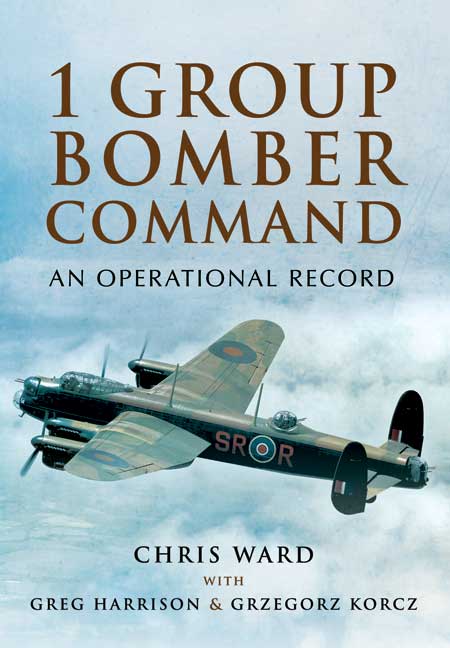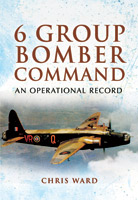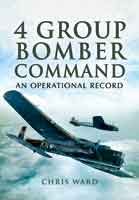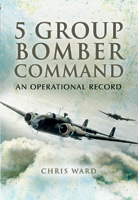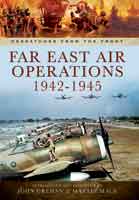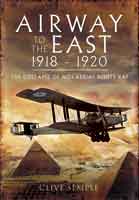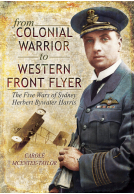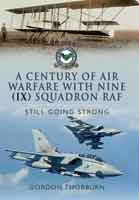1 Group Bomber Command (Hardback)
An Operational Record
Imprint: Pen & Sword Aviation
Pages: 331
ISBN: 9781473821088
Published: 18th June 2014
(click here for international delivery rates)
Order within the next 11 hours, 27 minutes to get your order processed the next working day!
Need a currency converter? Check XE.com for live rates
| Other formats available - Buy the Hardback and get the eBook for free! | Price |
|---|---|
| 1 Group Bomber Command ePub (27.0 MB) Add to Basket | £6.99 |
During the period immediately before the Second World War, the RAF modified its command structure to rationalize for rapid expansion. Bomber Command was divided into six operational groups, each flying the same type of aircraft, including Wellingtons, Sterlings, and Lancasters. Chris Ward presents us here with the history of 1 Group Bomber Command, having previously acquainted us with the histories of 3, 4, 5, and 6 Groups in four highly acclaimed volumes, published by Pen and Sword. He continues with characteristic ease, quality of research, and narrative pace, to present us with an operational record of the groups activities during a particularly dramatic period of aviation history.
The book contains individual squadron statistics, their commanding officers, stations and aircraft losses. It provides an exhaustive reference for one of the RAF's most important operational groups.
The narrative gives a clear picture of how Bomber Command's effectiveness slowly improved, from it must be said a very low start early in the strategic bombing campaign, when the Command was lucky if more than a handful of its aircraft hit their official target on any particular raid.
History of War, John Rickard
Read the complete review here.
There has clearly been so much work put into compiling this detailed history, it is one I would describe as a must have for anyone interested in the history of Bomber Command during WWII.
Military Modelling
1 Group Bomber Command is a great reference book for every person interested in the history of this Bomber Command unit. It provides the reader with a myriad of facts and the opportunity to compare the records of a single squadron with another. Overviews like the individual aircraft histories will be of great use for amateur researchers. It is an astonishing achievement by the authors to gather and combine so much information in one book.
Go2War2.com
Chris Ward provides a comprehensive description of the group's activities during a particularly dramatic period of aviation history. This book contains individual squadron statistics and provides an exhaustive reference for one of the RAF's most important operational groups.
Royal Air Force News
What makes this book stand out for me is the meticulous research that puts a human face on the endeavours of 1 Group, Bomber Command. ... The book is an easy read, with a wealth of details that make it more than just a chronology. I enjoyed it and it should appeal to readers with an interest in the Royal Air Force, Bomber Command and its Groups, and the Second World War in general.
Army Rumour Service
Excellent. Highly recommended.
British Military History website
About Chris Ward
Chris Ward has been writing about RAF Bomber Command in WW11 since the mid nineties. He began with his highly successful Bomber Command Squadron Profile series of spiral-bound publications. It was during this period that Andreas Wachtel contacted Chris for information for a book he was writing, and the two became the closest of friends, to the extent that they regard each other as family. When Chris began working on his first major work, Dambusters, The Definitive History, which was published by Red Kite in 2003, Andreas took on the initial research in Germany and Holland. In this way Chris and Andreas made available to others the Dams raid crash sites of Maudslay and Barlow, which had never previously been identified, and they also publicised the scene of Astell’s crash, which is maintained by a local historian. Through this research Chris was able to correct long-held misconceptions about the circumstances of the crashes.
Chris was the first to research in depth the events of the Dortmund-Ems Canal disaster, which took place four months after the dams. He and Andreas discovered the crash sites of Holden, Allsebrook, Wilson and Divall, which had never previously been identified, let alone documented and surveyed. In 2013 a number of historians in the German town of Nordhorn released a book about the air war as experienced by the local community of Bentheim on Germany’s border with Holland. The inspiration for this book, which is a massive tome involving hundreds of hours of work, was Chris’s account of Holden’s crash on the farm of the Hood family, which resulted not only in the deaths of the eight-man Lancaster crew, including four members of Guy Gibson’s Dams crew, but also Frau Hood. 70 years to the day after this tragedy, on Sunday 15th September 2013, Chris and Andreas were guests of honour at a civic reception in Nordhorn to release the book. There was also a ceremony at the crash site beside the Hood farmyard, attended by the whole local Hood family, local dignitaries, the authors of the book and many interested spectators.
Another Chris Ward first was his enquiry into the events on the German side during the final attack by 617 and 9 Squadrons on the Tirpitz in a Norwegian fjord in November 1944. Kurt Schulze, who was a pilot on the nearby fighter airfield at Bardufoss at the time, sent Chris a copy of the transcripts of the German Courts Martial, which took place six weeks after the loss of Tirpitz to apportion blame. Chris translated them, and devoted an entire chapter in his original book and the P&S update to the reasons behind the German failure to intercept the approaching Lancaster force.
Chris has since worked on a series of books for P&S detailing the histories of the bomber groups. Those on 3, 4, 5 and 6 Groups have just been joined by his latest, 1 Group. He is currently working on an updated series of Bomber Command Squadron Profiles, which P&S have undertaken to publish in hardback.







